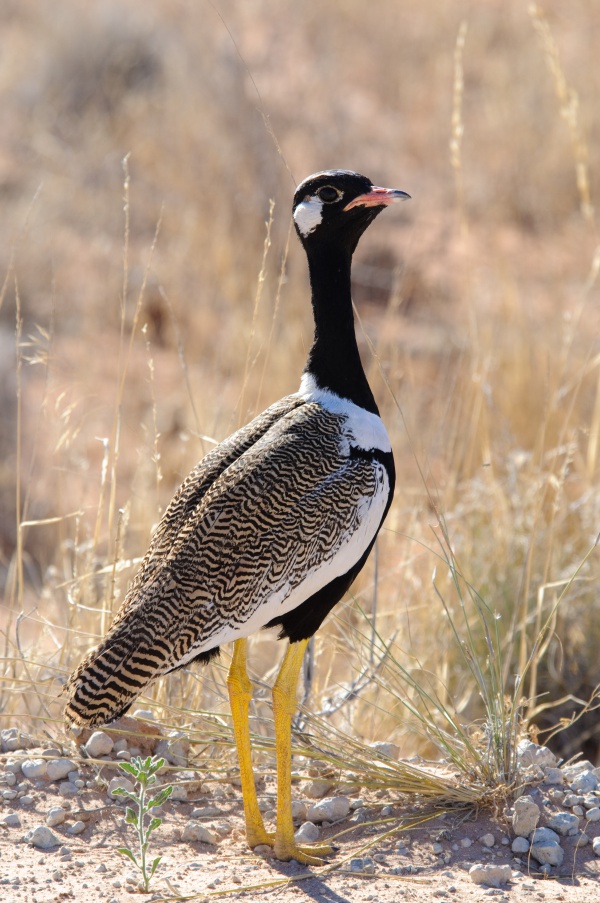Facts About Northern black korhaan
The northern black korhaan, also known as the white-quilled bustard, is a fascinating bird predominantly found in Southern Africa. Belonging to the bustard family, Otididae, it prefers open grasslands and scrubby areas. First described by Andrew Smith in 1831, this bird's classification has evolved over the years, culminating in its placement in the genus Afrotis in 2014.
In terms of appearance, male northern black korhaans are particularly striking with their black and white barred backs and wings, complemented by black heads, necks, and underparts. Females, in contrast, display a blend of black and buff barring on their heads, necks, breasts, and upper parts. Both genders have vibrant red beaks and yellow legs.
These birds are commonly found in countries such as Namibia, Botswana, Lesotho, and the northern regions of South Africa. They flourish in grasslands, scrublands, and open veldt areas, making these terrains their preferred habitats.
Primarily ground-dwellers, northern black korhaans have a diet that includes a variety of insects like termites, ants, grasshoppers, and beetles, as well as seeds. They can breed throughout the year, with males performing courtship displays and defending their territories. Their nests are simple ground scrapes, typically containing one or two eggs.
Regarding conservation, the northern black korhaan is currently thriving. The International Union for Conservation of Nature (IUCN) classifies it as "Least Concern" due to its commonality, wide distribution, and the lack of significant threats. Its population remains stable, indicating a favorable conservation status.

 Zambia
Zambia